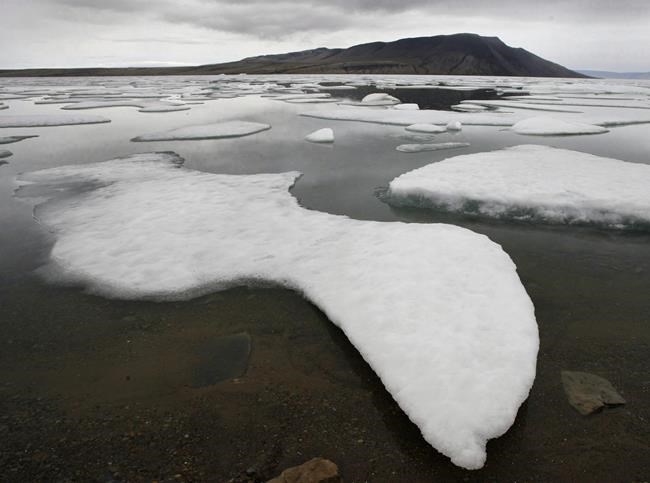The Last Ice Area may not last.
Scientists and conservation groups have counted on the icy ocean north of Ellesmere Island and Greenland to remain frozen year-round for long into the future, providing a last-ditch refuge for the complex community of plants and animals that depend on multi-year sea ice.
Maybe not, according to new research.
"It may not be as resilient as we think it is," said Kent Moore, an atmospheric physicist at the University of Toronto and co-author of a newly published paper looking into a strange ice anomaly from the summer of 2020.
That season, the German research vessel Polarstern was sailing in the Arctic and decided to enter the Wandel Sea above Greenland.
Navigators found they could just point the ship north. Ice, normally thick and solid year-round in those waters, wasn't a factor. As much as 30 per cent of those waters was free and clear.
"There was obviously something happening here," said Moore.
Sea ice coverage is complex, governed at least as much by winds, currents, and storms as it is by temperatures. But Moore and his colleagues noticed that ice in the so-called Last Ice Area had thinned over the previous years.
They asked: how much of that open water the Polarstern saw was caused by weather and how much by the fact climate change had already weakened the ice before the melt season?
It took 42 different computer simulations to find out. In each, the scientists started with ice conditions on June 1, 2020, and modelled what would happen to it using weather data from each year between 1979 and 2020.
Given the thin ice they began with, they concluded that about 80 per cent of the open water could be attributed to natural variation – the weather. The rest, though, was climate change.
"While primarily driven by unusual weather, climate change in the form of thinning sea ice contributed significantly to the record low August 2020 (sea ice concentration)," the paper says.
That ice isn't likely to come back any time soon, said Moore. Multi-year ice, the kind that builds up four metres thick, takes at least five years to form.
That kind of sea ice was supposed to be a feature of the Last Ice Area for a long time to come. It's the main reason why the federal government created the Tallurutiup Imanga marine conservation area on the Canadian side of the region.
A whole ecosystem depends on that ice. About a quarter of the world's polar bears and most of its narwhal live in and around Tallurutiup Imanga.
"The ice (here) will survive longer than the rest – but it may not survive all that much longer," said Moore.
"And if it doesn't survive, we've got a serious problem. There's no place for these animals. It could be this area won't be a refuge."
Losing more multi-year ice from the area also speeds the warming of the ocean itself, as more sunlight hits it.
"That's a feedback loop that kicks in," Moore said.
Moore's said he's excited by his findings and looks forward to digging into the next question – why were the winds so strong, for example. But there's another side to his research.
"It's exciting research because it's new science," Moore said. "But it's kind of a sad story. It says this area's changing and not in a good way.
"My only hope is by telling these stories, we can encourage people to do something. What the sea ice looks like in 2050 is totally under our control."
This report by The Canadian Press was first published July 1, 2021.
Bob Weber, The Canadian Press



